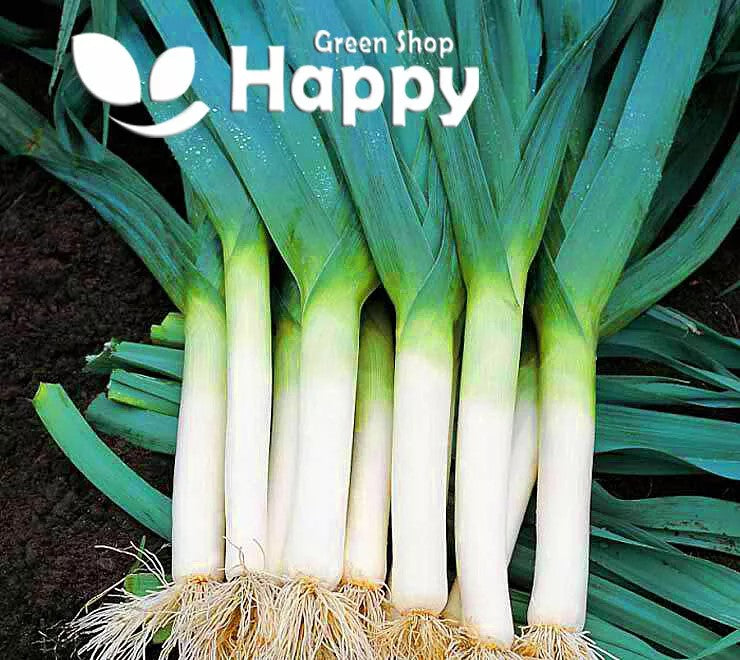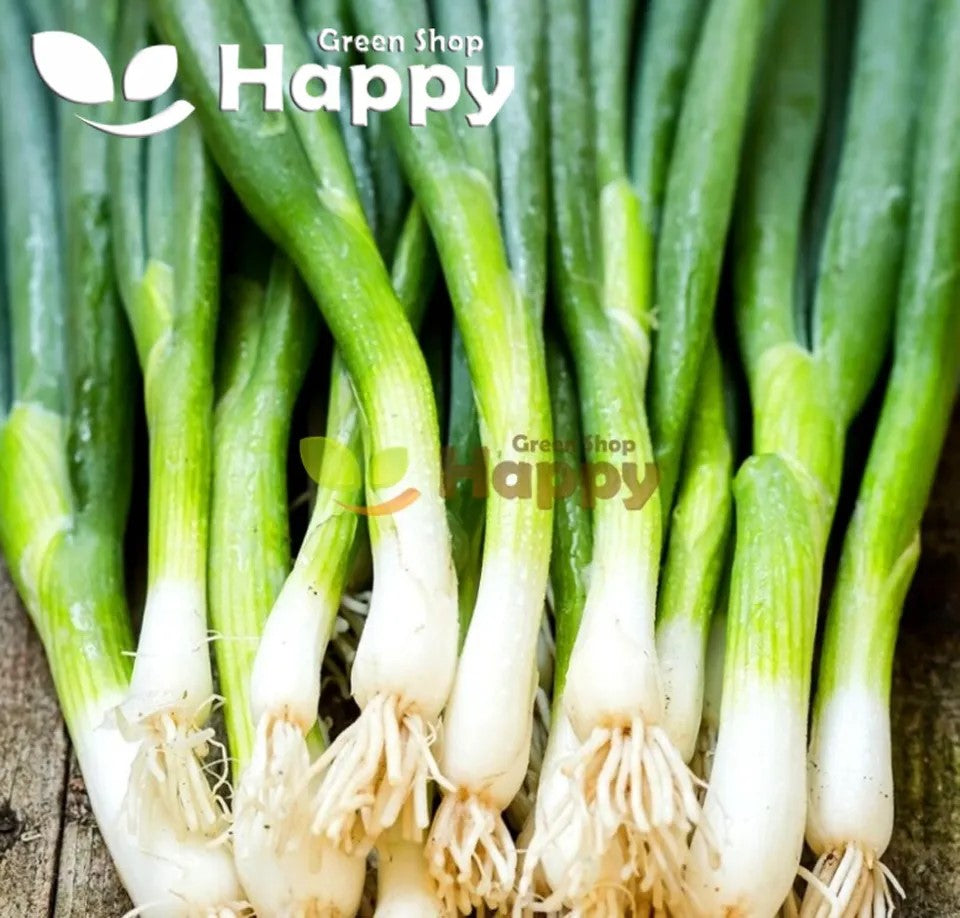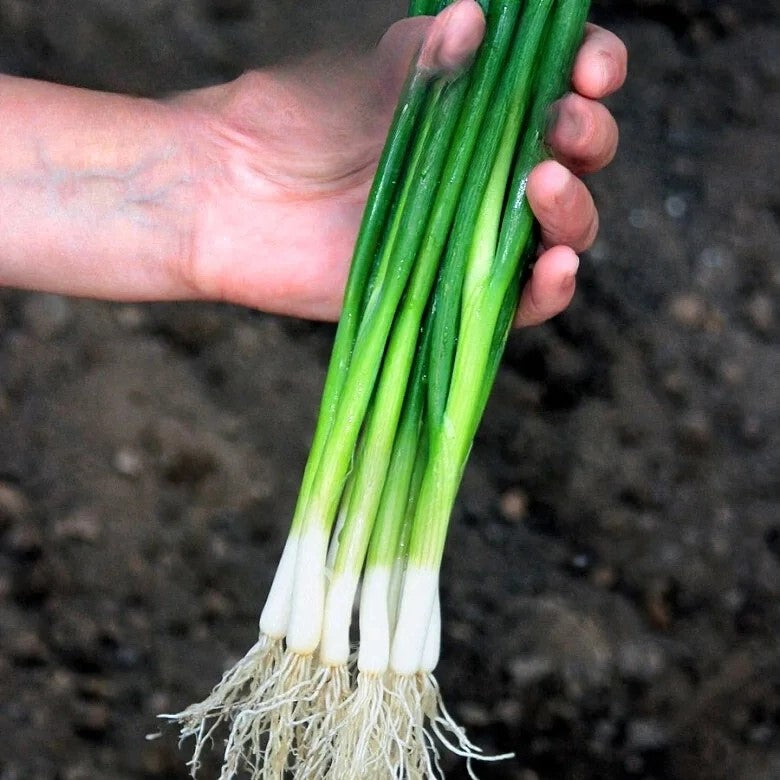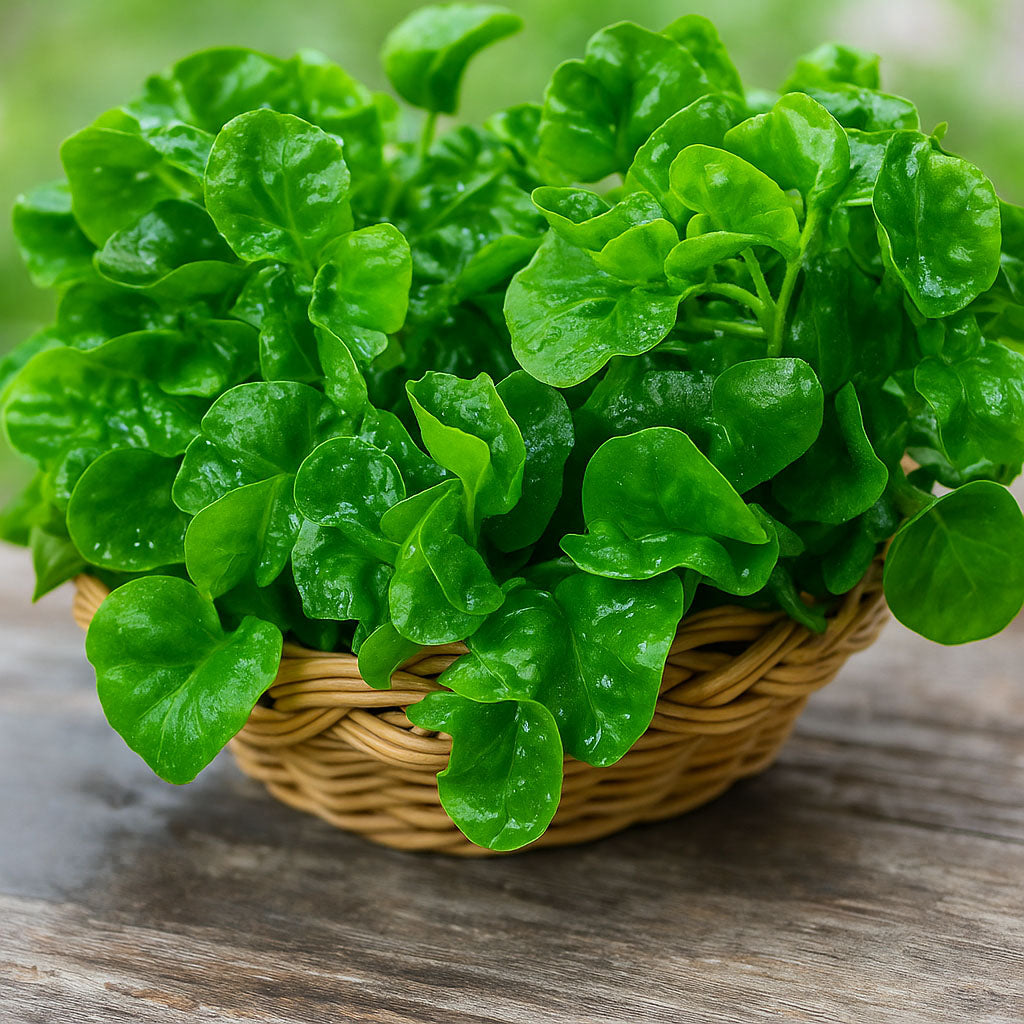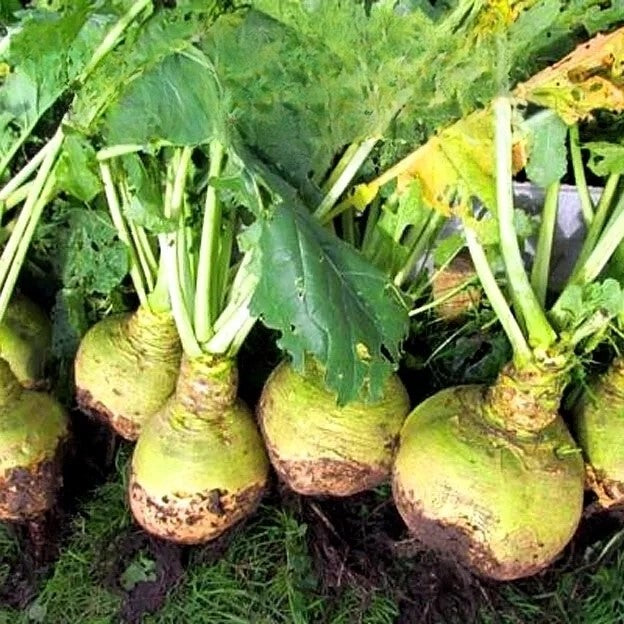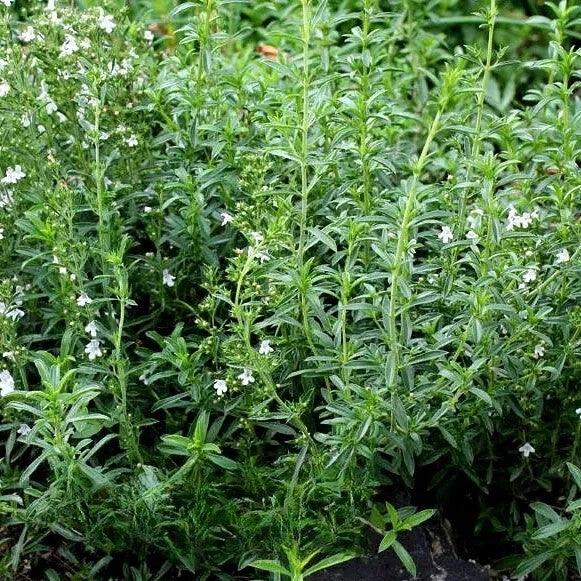Sort by:
97 products
97 products
Winter Kale – Seeds (Brassica oleracea)
Winter Kale is a hardy, nutrient-rich leafy green perfect for cold-weather gardens. This variety produces robust, dark green leaves that remain tender and flavorful even after frost. Ideal for soups, stews, sautés, or fresh salads, Winter Kale is a staple for year-round gardening and adds both color and nutrition to your plate.
How to Grow
-
Sow seeds outdoors from March to July.
-
Sow 1–2 cm deep in rows 30–40 cm apart.
-
Thin seedlings to 20–30 cm spacing for strong growth.
-
Prefers fertile, well-drained soil in full sun to partial shade.
-
Can be harvested continuously by cutting outer leaves, leaving the center to grow.
Key Features
-
Cold-hardy and frost-tolerant
-
Nutrient-dense dark green leaves
-
Continuous cut-and-come-again harvesting
-
Ideal for soups, stews, salads, and sautéing
-
Easy to grow in home gardens and allotments
Ideal For
-
Winter and early spring harvesting
-
Nutritious soups, smoothies, and salads
-
Beginner and experienced gardeners alike
Sowing & Harvest
-
Sow: March to July
-
Depth: 1–2 cm
-
Spacing: 20–30 cm between plants
-
Harvest: September to February
Quick Tip
-
Frost enhances the flavor, making the leaves sweeter and more tender.
Welsh Onion 'Kroll' – Seeds (Allium fistulosum)
The Welsh Onion 'Kroll' is a hardy and versatile perennial onion grown for its slender, upright stems and mild, onion-like flavor. Unlike bulb onions, it does not form bulbs but produces clusters of long, hollow stems that can be cut and used fresh like spring onions or left to grow for a stronger flavor. An easy, cut-and-come-again crop that thrives year after year.
How to Grow
-
Sow seeds outdoors from March to July or indoors earlier for transplanting.
-
Sow thinly, 1 cm deep, in rows 20 cm apart.
-
Thin seedlings to 10 cm spacing once established.
-
Prefers well-drained, fertile soil in full sun.
-
Harvest by cutting stems as required, leaving roots intact for regrowth.
Key Features
-
Perennial onion producing clusters of hollow stems
-
Mild, fresh onion flavor
-
Easy cut-and-come-again harvest
-
Hardy and long-lived in the garden
-
Perfect alternative to spring onions
Ideal For
-
Soups, salads, stir-fries, and garnishes
-
Kitchen gardens, allotments, and containers
-
Low-maintenance perennial cropping
-
Year-round use in cooking
Sowing & Harvest
-
Sow: March to July
-
Depth: 1 cm
-
Spacing: 10 cm between plants, 20 cm between rows
-
Harvest: June to October, with regrowth year after year
Quick Tip
-
Divide clumps every few years to keep plants vigorous and productive.
Curly Kale 'Sympatic' – Seeds (Brassica oleracea var. sabellica)
The Curly Kale 'Sympatic' is a vigorous and reliable kale variety, known for its decorative, tightly curled green leaves and excellent winter hardiness. This hardy leafy green thrives in cooler weather and can be harvested for many months, making it a staple crop for any kitchen garden.
Kale 'Sympatic' has a sweet, mild flavor that improves after the first frosts, when the leaves become more tender and less bitter. Perfect for soups, stews, stir-fries, smoothies, or simply steamed as a healthy side. The upright plants are also highly ornamental, adding texture and vibrant color to vegetable beds and borders.
How to Grow
-
Sow indoors: March – May
-
Sow outdoors: April – June, thinly in rows 1 cm deep
-
Transplant/Thin: 45 cm apart when seedlings are large enough
-
Position: Full sun or partial shade
-
Soil: Moist, fertile, well-drained soil enriched with compost
-
Care: Water regularly and protect young plants from cabbage pests
Key Features
-
Hardy curly kale with decorative, ruffled leaves
-
Reliable growth and long cropping season
-
Flavour sweetens after frost
-
Nutrient-rich superfood, packed with vitamins A, C, and K
-
Great for winter harvests when little else grows
Harvest
-
Harvesting period: October – March
-
Pick outer leaves regularly, allowing the plant to continue producing throughout winter.
Short Tip
For the sweetest flavor, leave plants in the ground until after the first frosts – the cold enhances the natural sugars in the leaves.
Watercress – Seeds (Nasturtium officinale)
Watercress is a fast-growing, nutrient-packed leafy green with a peppery, fresh flavor. Perfect for salads, sandwiches, soups, and garnishes, it thrives in moist soil or near water and adds a vibrant, tangy taste to your dishes. Easy to grow, it’s an ideal addition to kitchen gardens, herb beds, or containers.
How to Grow
-
Sow seeds in shallow trays or directly in moist soil from March to July.
-
Keep seeds lightly covered and consistently damp.
-
Prefers partial shade and consistently moist or wet conditions.
-
Transplant or thin seedlings to allow 10–15 cm spacing.
-
Harvest leaves when young for the best flavor.
Key Features
-
Fast-growing, nutrient-rich leafy green
-
Fresh, peppery flavor perfect for salads and garnishes
-
Thrives in moist soil or water-adjacent beds
-
Ideal for continuous cut-and-come-again harvesting
-
Easy to grow in containers, garden beds, or water troughs
Ideal For
-
Fresh salads, sandwiches, soups, and garnishes
-
Kitchen gardens, herb beds, and small spaces
-
Health-conscious and culinary gardeners
Sowing & Harvest
-
Sow: March to July
-
Depth: Lightly covered
-
Spacing: 10–15 cm
-
Harvest: April to October
Quick Tip
-
Keep soil or growing medium consistently wet to maintain crisp, flavorful leaves.
Tomato Pink 'Maliniak' – Seeds (Solanum lycopersicum)
The Tomato Pink 'Maliniak' is a traditional Polish heirloom variety known for its large, pink, fleshy fruits bursting with rich, sweet flavor. This mid-season tomato is a favorite among home gardeners for its outstanding taste, meaty texture, and versatility in the kitchen. Perfect for slicing, fresh salads, and sandwiches, it also performs beautifully in sauces and preserves.
How to Grow
-
Sow indoors from February to April, 0.5 cm deep in seed trays or pots.
-
Keep at 18–22°C until germination.
-
Transplant seedlings into larger pots when strong enough, then outdoors or into a greenhouse after frost has passed.
-
Provide support as plants grow tall and bear heavy fruits.
Key Features
-
Large, pink fleshy fruits with rich, sweet taste
-
Traditional Polish heirloom tomato
-
Mid-season variety with reliable yields
-
Ideal for fresh eating and cooking
-
Strong, healthy plants suitable for greenhouse or outdoor cultivation
Ideal For
-
Fresh salads and sandwiches
-
Cooking into sauces and soups
-
Traditional and heirloom vegetable gardens
Sowing & Harvest
-
Sow: February to April
-
Plant out: May to June (after frost)
-
Harvest: July to September
Quick Tip
-
For best flavor, allow fruits to fully ripen on the vine before picking. Regular feeding boosts size and sweetness.
Swiss Chard 'Rainbow' Mix – Seeds (Beta vulgaris)
Swiss Chard 'Rainbow' Mix is a vibrant blend of brightly colored chard varieties, producing stems in shades of red, pink, yellow, orange, and white. Not only is it highly decorative in the garden, but it’s also delicious and nutritious. The tender leaves can be used like spinach, while the crunchy stems add color and flavor to stir-fries, soups, and sautés. A cut-and-come-again crop, it will provide a long season of harvests from summer well into autumn.
How to Grow
-
Sow outdoors: March – August, directly into prepared soil.
-
Soil: Fertile, well-drained soil in full sun or partial shade.
-
Spacing: Thin seedlings to 25–30 cm apart.
-
Keep soil consistently moist for tender, flavorful leaves.
Key Features
-
Mix of colorful chard varieties
-
Edible leaves and crunchy stems
-
Long cropping season
-
Cut-and-come-again harvests
-
Both ornamental and edible
Ideal For
-
Kitchen gardens and allotments
-
Edible borders and decorative planting
-
Healthy cooking and juicing
Sowing & Harvest
-
Sow: March – August
-
Harvest: June – November
Quick Tip
Harvest young leaves regularly for salads and cooking. Mature stems can be steamed or sautéed for added color and flavor.
Swede – Seeds (Brassica napus)
Swede (also known as rutabaga or Swedish turnip) is a hardy root vegetable that produces large, round roots with golden-yellow flesh and a sweet, earthy flavor. It is an excellent choice for winter storage and a versatile kitchen staple, ideal for roasting, mashing, stews, and soups.
This traditional cool-season crop is easy to grow, highly nutritious, and a reliable addition to any vegetable garden or allotment.
How to Grow
-
Sow outdoors: May – July
-
Depth: 1–2 cm
-
Spacing: 20 cm apart in rows 40 cm apart
-
Position: Full sun
-
Soil: Fertile, firm, well-drained soil enriched with compost
-
Watering: Keep soil moist during dry spells to avoid woody roots
Key Features
-
Traditional root crop with sweet, golden-yellow flesh
-
Excellent for roasting, mashing, soups, and stews
-
Stores well for use throughout winter
-
Hardy and reliable in cooler climates
-
Easy to grow with minimal care
Harvest
-
Harvesting period: October – February
-
Lift roots as needed for fresh use or store for winter months.
Short Tip
Thin seedlings early to give roots space to develop fully.
Summer Savory 'Midget' – Seeds (Satureja hortensis)
Summer Savory ‘Midget’ is a compact, fast-growing annual herb, prized for its spicy, peppery flavour that resembles thyme and oregano. This dwarf variety is especially suited for container growing, raised beds, and small herb gardens.
Traditionally used to season bean dishes, meats, soups, and stews, it is also excellent fresh or dried as a versatile culinary herb. With its neat, bushy growth habit and aromatic leaves, ‘Midget’ is both decorative and useful in the kitchen.
How to Grow
-
Sow indoors: March – April in pots or trays
-
Sow outdoors: April – June, directly into prepared soil
-
Depth: Lightly cover seeds with soil (approx. 0.5 cm)
-
Spacing: 20–25 cm between plants
-
Position: Sunny, well-drained spot
-
Soil: Light, sandy, moderately fertile
Key Features
-
Compact dwarf variety – ideal for pots and small spaces
-
Distinct peppery flavour – a classic bean seasoning
-
Culinary herb for meats, stews, soups, and sauces
-
Can be used fresh or dried
-
Hardy, quick-growing, and easy to maintain
Harvesting
-
Harvest from: June – September
-
Pick fresh leaves regularly to encourage new growth.
-
For winter use, cut and dry whole sprigs just before flowering.
Stinging Nettle – Seeds
(Urtica dioica)
Stinging Nettle (Urtica dioica) is a versatile perennial herb valued for its nutritional and medicinal properties. Its vibrant green leaves are rich in vitamins and minerals, making it perfect for teas, soups, and natural remedies. Hardy and easy to grow, it also provides shelter and food for wildlife, supporting pollinators and beneficial insects.
Why Grow Stinging Nettle?
-
Nutrient-rich leaves for culinary and medicinal use
-
Hardy perennial, easy to grow
-
Supports pollinators and wildlife
-
Traditional herbal remedy with multiple uses
Key Features
-
Type: Perennial herb
-
Height: 60–150 cm
-
Leaves: Harvest from spring to autumn
-
Position: Full sun to partial shade
-
Soil: Moist, fertile, well-drained
Ideal For
-
Herbal and edible gardens
-
Pollinator-friendly plantings
-
Natural remedies and teas
-
Wildlife habitats
Sowing & Growing
-
Sow indoors: February–April in seed trays
-
Sow outdoors: April–May directly in prepared soil
-
Germination: 14–28 days at 15–20°C
-
Spacing: Thin seedlings to 30 cm apart
-
Care: Prefers consistent moisture; perennial, low maintenance
Showing 18/97

